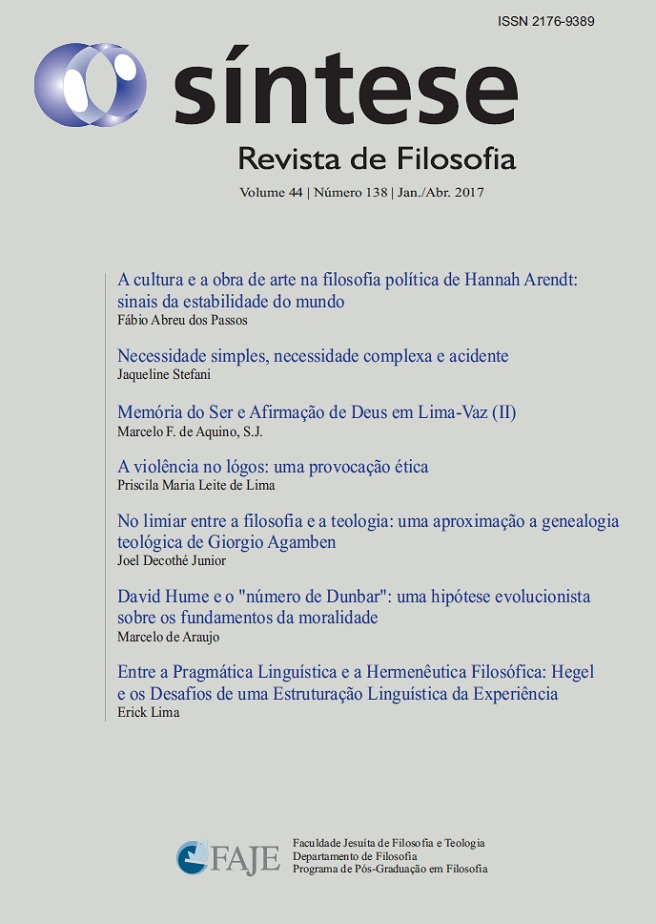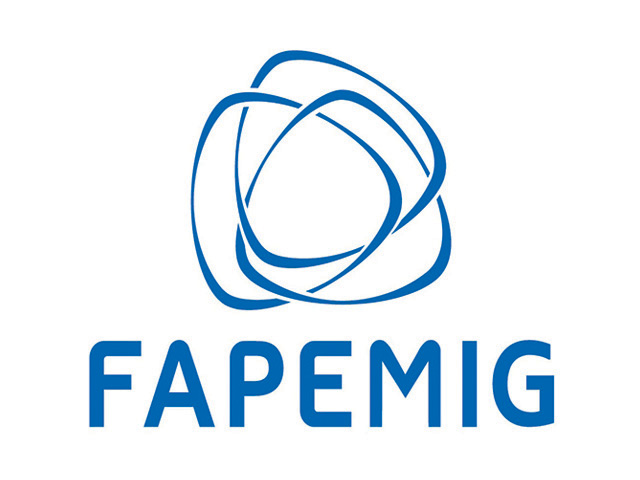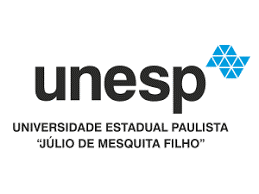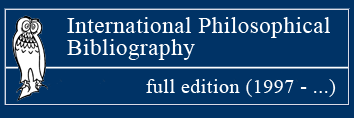A CULTURA E A OBRA DE ARTE NA FILOSOFIA POLÍTICA DE HANNAH ARENDT: SINAIS DA ESTABILIDADE DO MUNDO
DOI:
https://doi.org/10.20911/21769389v44n138p5/2017Palavras-chave:
Mundo. Artifício Humano. Estabilidade Política. Hannah Arendt / World. Human Artifice. Political Stability. Hannah ArendtResumo
Resumo: O mundo, no interior das reflexões de Hannah Arendt (1906-1975), deve ser compreendido como algo construído pela capacidade humana de reificação e, nesse sentido, deve ser visto como um artifício humano. Essa capacidade humana de reificação edifica um mundo de estabilidade, que existe antes de nossa chegada e continuará a existir após nossa breve passagem por ele, dando, assim, aos seres finitos, um lar mais durável do que suas próprias vidas e, consequentemente, garante-lhes uma identidade. Essa identidade aparece como algo de permanente em meio à s constantes mudanças da vida, um abrigo diante das intempéries de suas existências, ou seja, uma morada a partir da qual possam reconhecer-se como humanos, pois o mundo é a marca indelével de que somos seres que constroem história e cultura. O mundo e sua durabilidade manifestar-se-á, sobretudo, na cultura e, especificamente, na obra de arte: a mais durável das obras humanas, pois há nela um grau de excepcional permanência que nenhum outro objeto produzido pelo homo faber possui. Essas reflexões nos proporcionarão abrir uma linha argumentativa que nos levará a compreender uma importante característica do conceito de mundo no pensamento político arendtiano, ou seja, que o mundo, enquanto fonte de estabilidade, permite ao homem ser compreendido usando-se o substantivo “homem” no plural.
Abstract: The world, inside the reflections of Hannah Arendt (1906-1975), must be understood as something constructed by the human capacity of reification and, accordingly, may be viewed as a human gimmick. This human ability of reification builds a world of stability, that exists before our arrival and will continue to exist after our brief stint for him, giving, thereby, to finite people, a more durable home than their own lives and, consequently, guarantee to them an identity. This identity appears as something permanent in the midst of the constant changes of life, a shelter on the bad conditions of their existence, or, with other words, a residence from which they can recognize themselves as humans, because the world is the indelible mark that we are beings who build history and culture. The world and its durability will manifest itself, especially in culture and, specifically, in the work of art: the more durable of the human works, because there is in it a degree of exceptional permanence that no other object produced by homo faber has. These conceptions will open an argumentative line which lead us to understand an important feature of the concept of the world in the Arendt's political thought, namely, that the world, as a source of stability, allows the man be understood using the noun “man” in the plural.Â


















